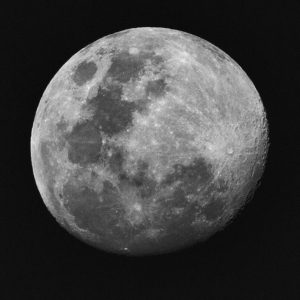In the final episode of the first season of “Space Force,” perhaps one of the most under-rated shows on Netflix this year, China and the United States get ready to duke it out on the moon, as China’s craftiness and U.S. haplessness literally acquire cosmic proportions. The show’s premise is a presidential order (presumably issued by Donald Trump) to put boots on the moon by 2024 and revolves around the U.S. Space Force, an independent branch of the military that was established in December last year.
The Space Force has been routinely ridiculed by defense analysts, not the least because in September it saw its first foreign deployment, of 20 servicemen — to the Al Udeid Air Base in Qatar. Wisecracks have also panned the woodland camouflage uniform of the service, with one snarky Twitter user asking “How many trees are you expecting to find in space [?]”
Now the Air Force Research Laboratory’s Space Vehicles Directorate is embarking on an experiment toward a moon patrol. Speaking to SpaceNews on November 2, the project’s manager Capt. David Buehler noted: “If we’re going to protect and defend, the Space Force is going to need to understand the environment, have space domain awareness capabilities to be able to know where everything is out there.”
OK, so the idea behind the Cislunar Highway Patrol System (CHPS) is not literally sending a bunch of Space Force personnel to patrol the moon, presumably in their camouflage uniforms. But rather, it is to launch a satellite that would hover at a fixed point between the earth’s outer orbit and the moon – hence, “cislunar” – where it will be able to stay in place because of the combined gravitational effects of its own mass and the masses of the earth and the moon. (For a system of any three masses, there are precisely five such Lagrange points.) The CHPS is a “space domain awareness” (SDA) experiment, the first such that focuses on the cislunar space.
This is an eminently practical concern, conceptually at par with maritime domain awareness, (MDA) but with space instead of the high seas. Just like MDA revolves around keeping an eye on sea lanes of communications as well as other activities in the seas, the CHPS – as the moon’s commercial and strategic value increases – will perform an analogous service in monitoring the cislunar space. As Everett Dolman at the U.S. Air Force’s School of Advanced Air and Space Studies told Space.com in 2018, “Historically, as the commons become commercially important, it is not the military that pushes for presence there, it is the vested interests desiring protection that pull it in.”
The moon is assumed to be a source of critical minerals, including platinum-like ones used in the electronics industry. Given China’s near monopoly over these minerals, they have figured crucially in discussions around strategic competition between China and the U.S. and its allies in the past few years. Also of interest is helium-3, which if mined from the moon and brought back to the earth, coupled with appropriate fusion reactors, could form a significant source of energy on earth.
While the 1967 Outer Space Treaty (OST) prohibits any single nation laying claim to celestial bodies, among other things, in April this year, Trump signed an executive order that would allow the mining of the moon. Parenthetically, the OST also prohibits countries from placing weapons of mass destruction on the moon, which means that Dr. Evil with his “giant laser” on the moon would be in violation of the treaty; or perhaps not, given his status as a non-state actor.
As physicist and futurist Michio Kaku put it in a 2018 book, the OST is silent about commercial exploitation of the moon, perhaps because its drafters didn’t quite imagine that as a possibility worth considering. Nevertheless, as The Diplomat’s defense writer Rajeswari Pillai Rajagopalan has argued, Trump’s “explicit assertion that outer space will not be considered as part of global commons is new,” even if it doesn’t directly violate the OST. So, strictly speaking the CHPS will not function as commons domain awareness project, given that space, per Trump, is not part of the global commons. Rather, it will either protect U.S. interests on the moon, or monitor China’s activities as it too seeks to secure a stake there.
So fundamentally, SDA plans such as the CHPS (which at the moment, envisions only tracking spacecraft bound for the moon) are only truly meaningful if the U.S. or China, for that matter, seeks to establish a permanent base on the moon or its vicinity to mine, or otherwise commercially exploit, earth’s only natural satellite. NASA has planned a Lunar Orbital Platform-Gateway – a cislunar version of the International Space Station – that would allow it to maintain a human presence in the region. If that facility materializes, and is for exclusive use of the U.S., think of it as being akin to one of the artificial islands China has constructed in the South China Sea.
And prepare your children for a real-life enactment of the final episode of “Space Force” 30 years down the line.
































